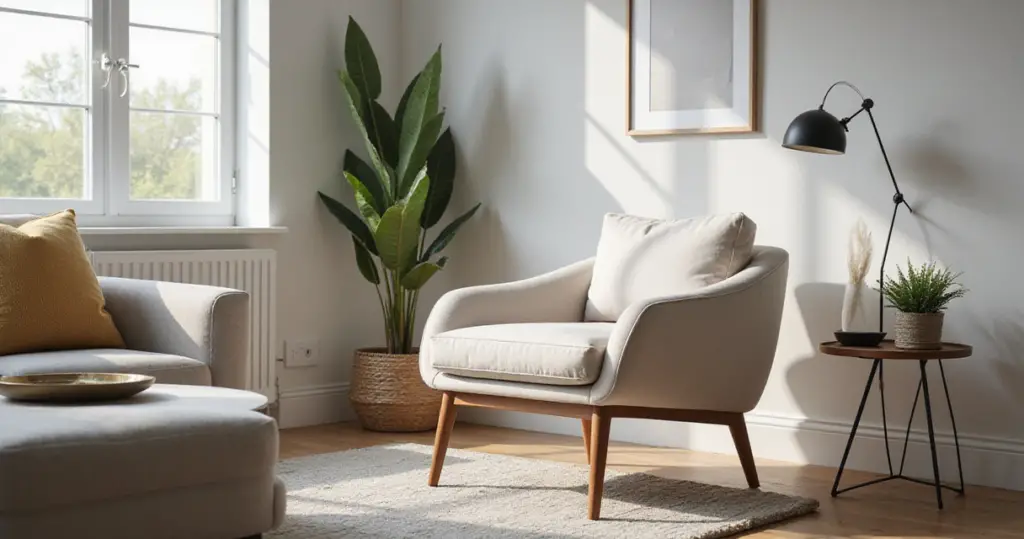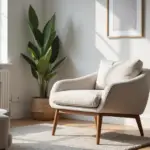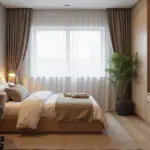Can we talk about the sad, lonely accent chair for a moment? You know the one. It’s pushed into a corner, looking like it’s in time-out. It’s handsome enough, but it has no purpose, no life. It’s just… furniture. My biggest pet peeve is seeing a chair treated like an object instead of an opportunity. An opportunity for connection, for quiet moments, for a burst of soul in a room.
You asked me how to get this right, so let’s forget the endless blog posts and corporate speak. The secret isn’t about buying the most expensive chair. It’s about creating a moment. It’s about taking that single seat and weaving a story around it with texture, light, and placement. It’s about making it the best seat in the house—a place that feels both outrageously chic and deeply, personally yours. Let’s bring that chair to life.
Foundational Choices: Selecting Your Perfect Chair
Before we get to the fun part with pillows and throws, we have to get the bones right. Think of this as the foundation of your home. If it’s not solid, nothing you build on top of it will ever feel quite right. These choices are about intelligence and foresight, blending that vibrant Latin passion with a touch of British pragmatism.
1. Optimize Chair Scale for Seamless Room Integration
This sounds so technical, but it’s simple: Does the chair fit the energy of the room? Everyone gets this wrong. They see a giant, puffy armchair online and cram it into a small London flat, where it suffocates the space. Or they put a delicate little chair in a grand, open-plan living area, and it looks like a scared child at a grown-up party. The chair and the room end up looking completely ridiculous.
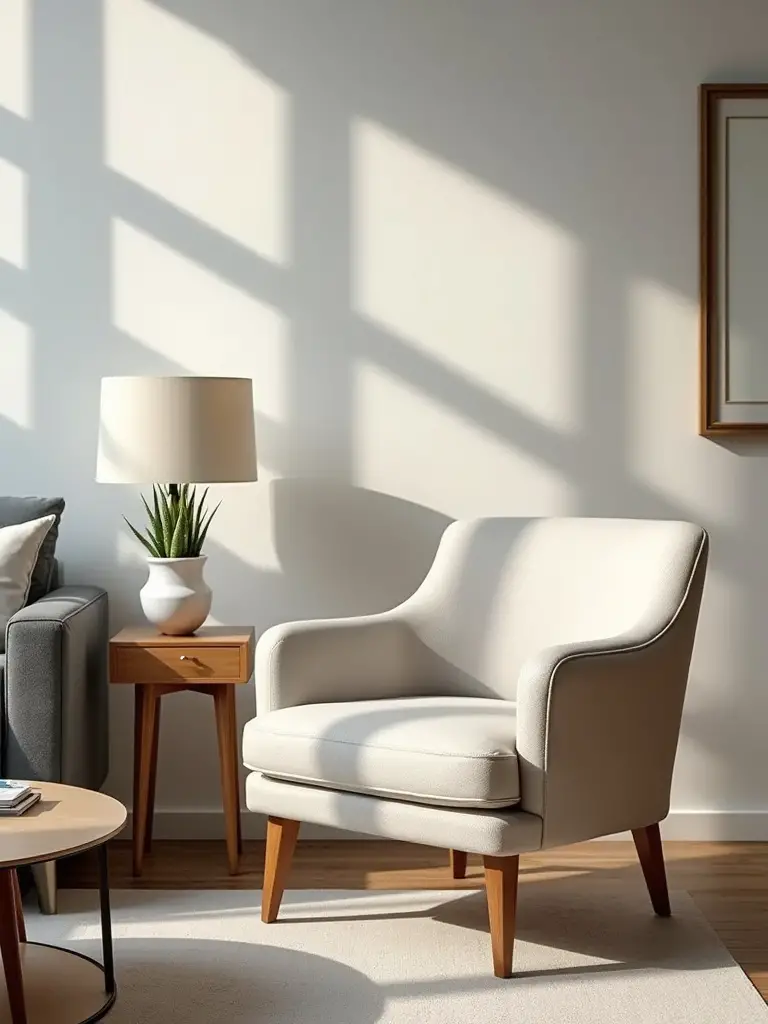
Forget rulers for a second and just use your eyes. The chair should feel like a natural part of the conversation, not screaming for attention or whispering from the corner. Here’s my shortcut: use masking tape on the floor to outline the chair’s footprint before you buy. Live with that blue rectangle for a day. Walk around it. Does it feel generous or cramped? Trust your gut. A chair that respects the scale of its surroundings is a chair that invites you in, making the whole room feel calmer and more cohesive.
Now that the chair can breathe, we need to make sure it’s speaking the same language as the rest of your decor.
2. Harmonize Chair Upholstery with Existing Decor Palette
Please, for the love of all that is beautiful, stop trying to match fabrics under the harsh, fluorescent lights of a showroom. It’s a recipe for disaster. I once had a client who was convinced she bought the perfect “greige” velvet, only to get it home and discover it had a sickly yellow-green undertone that clashed horribly with her cool, grey walls. The chair looked perpetually ill. That’s because lighting is everything. What looks sophisticated in a store can look cheap and off-key in the warm, natural light of your home.
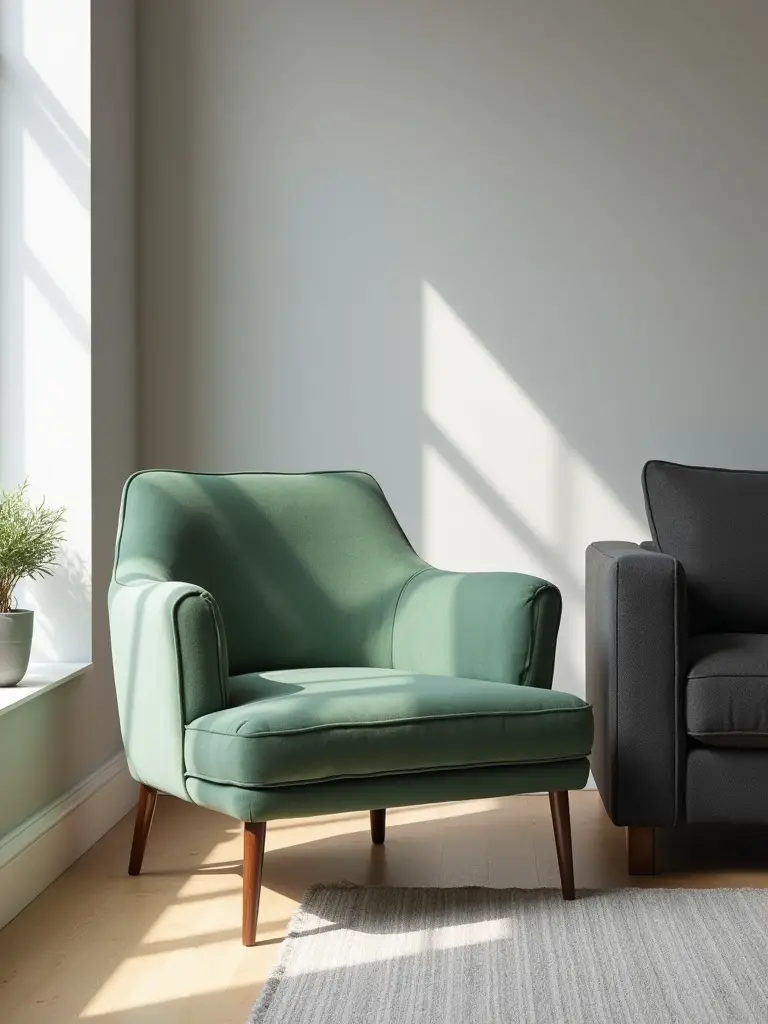
The secret isn’t to create a boring, beige-on-beige landscape. It’s to create harmony. Grab as many fabric swatches as you can carry—don’t be shy!—and tape them to the actual wall where the chair will live. Observe them in the morning light, at midday, and in the evening with your lamps on. Does the color sing? Does it add a vibrant rhythm or a calm melody? You’re looking for a relationship, not a perfect match. The right fabric will feel like it’s always been there, even if it’s a bold, tropical print in a contemporary room.
Once you’ve found a fabric that feels right, we need to ensure it’s not going to fall apart in a year.
3. Prioritize Durable Chair Materials for Lasting Appeal
Here’s the thing about “fast furniture”—it’s an environmental and financial disaster. A cheap chair made of particle board and staples isn’t a bargain; it’s landfill in waiting. I believe that true luxury is sustainability. It’s buying one beautiful, well-made piece that will last for thirty years, not thirty pieces that last for one. A chair with a solid soul is an heirloom, a friend. A flimsy one is just a waste.
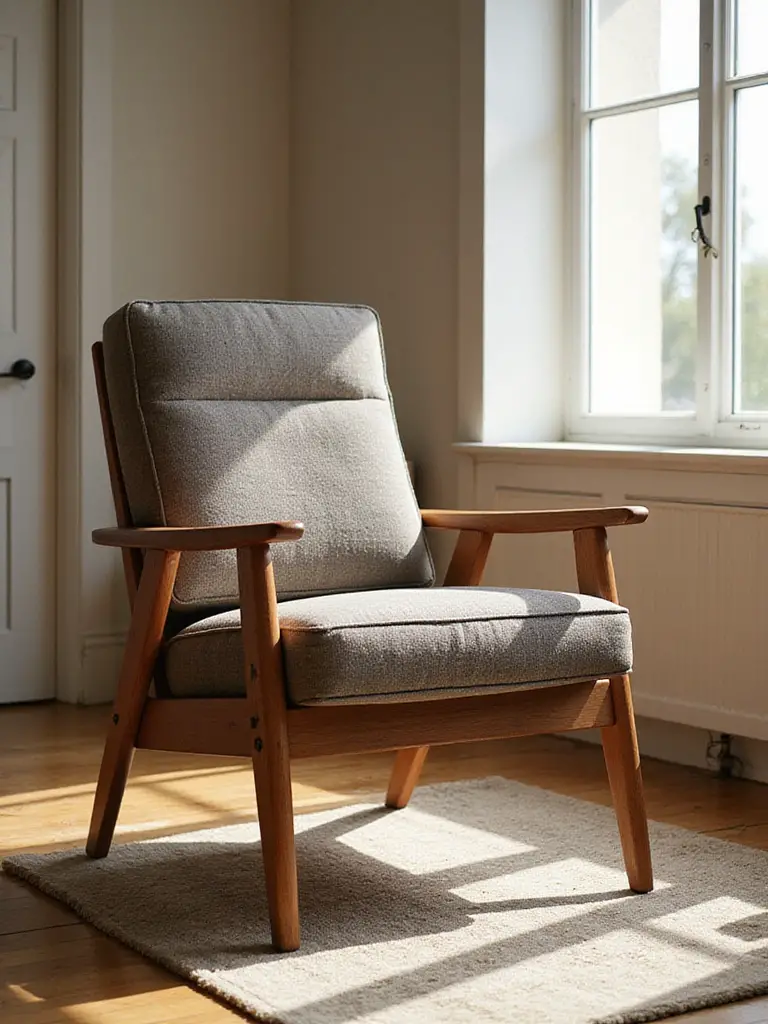
Don’t just look at the price tag; look at the guts of the thing. The most important shortcut? Ask the salesperson, “Is this frame kiln-dried hardwood?” If they stare at you blankly, walk away. That process prevents the wood from warping and cracking. Then, do the wiggle test. Grab the arms and give it a good shake. If it wobbles or creaks, it’s garbage. True quality is quiet and steadfast. A solid frame is the difference between a piece of furniture you tolerate and a piece you love, a piece that supports you, literally and figuratively, for years to come.
This commitment to quality extends to choosing a chair with real star power.
4. Select Accent Chairs for Striking Visual Interest
An accent chair shouldn’t be a wallflower. It’s your chance to be bold, to tell a story. Think of your sofa as the reliable, elegant host of the party. The accent chair is the fascinating guest who just flew in from somewhere exotic with a fantastic tale to tell. It doesn’t have to match anything. In fact, it’s often better if it doesn’t. This is where you inject personality—the one piece in the room that is purely about joy.
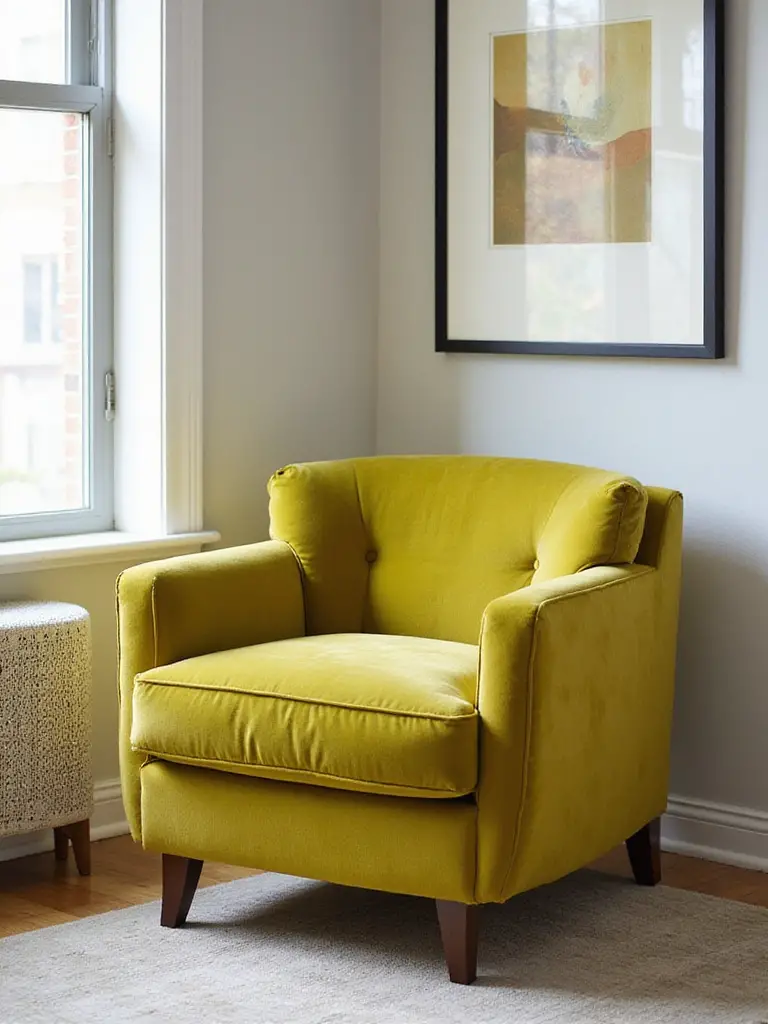
Instead of another muted solid, why not a reclaimed teak plantation chair with woven rattan? Or a classic British wingback re-upholstered in a wild, Amazonian botanical print? I worked on a very serene, minimalist coastal home once, and we brought in a single, sculptural armchair made from polished concrete and soft leather. It was completely unexpected. It was art. It grounded the entire room and gave it a pulse. Don’t just look for something to sit on; look for a piece with a point of view.
When you bring in that superstar, you can make it even more dynamic by playing with the textiles around it.
5. Strategically Mix Fabric Patterns for Dynamic Contrast
Everyone is so terrified of mixing patterns, so they retreat into a sea of matching solids. It’s the biggest BS in design that everything has to match. A room where everything matches is a room with no rhythm, no energy, no life! Think of your living room like a piece of music. You need different instruments, different tempos, to create something beautiful. Patterns are the percussion section—they provide the soul.
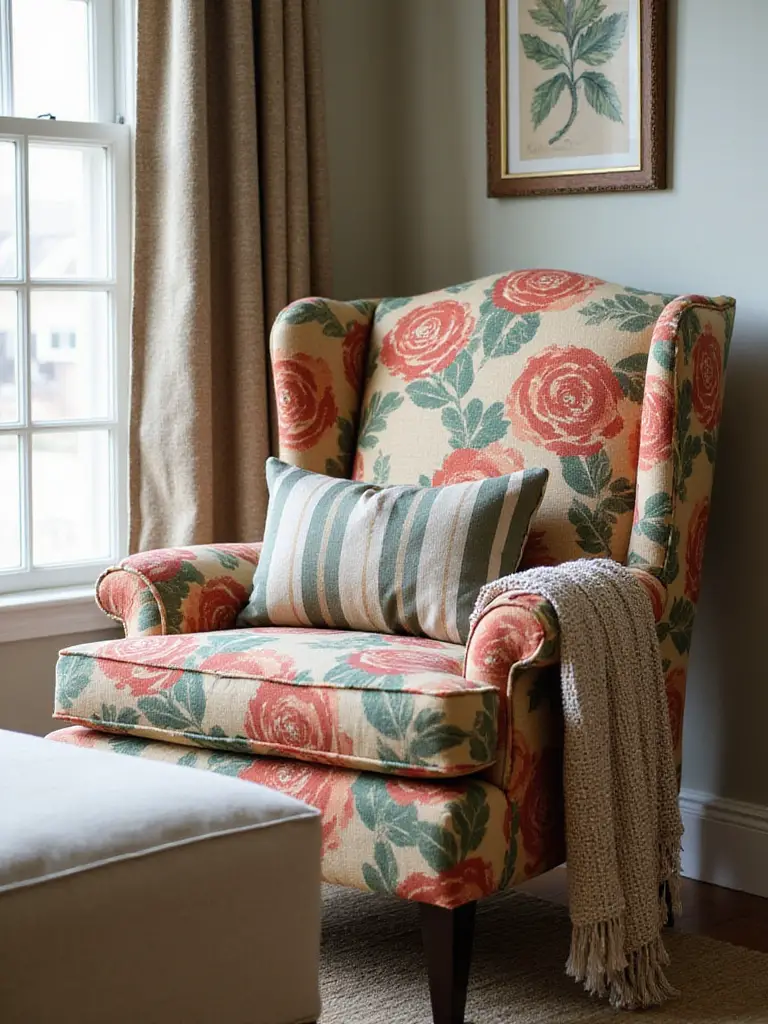
Here’s the shortcut to getting it right without creating chaos: the rule of three. Pick one large-scale pattern (like a bold floral or a big geometric on your accent chair), one medium-scale pattern (maybe stripes or a classic ikat on a pillow), and one small-scale texture (a tightly woven fabric, a subtle herringbone). Tie them together with a shared colour. If your floral chair has a touch of emerald green, let that green appear in the stripe. That’s your unifying thread. It’s a curated conversation, not a shouting match.
Now that the chair is chosen, let’s make it impossibly comfortable and stylish.
Enhancing Comfort & Style with Textiles
This is where the magic happens. A chair is just a frame until you dress it. Textiles are the soul—they are what transform a piece of furniture into a sanctuary. This is how you add layers of touchable, livable luxury that beg you to sit down, curl up, and stay a while.
6. Choose Throw Pillows for Layered Comfort and Texture
Throw pillows are not just frivolous afterthoughts. They are the essential jewelry of your chair. A chair without a pillow is like a beautiful outfit with no accessories—it feels unfinished. But don’t just throw any old cushion on there. This is a chance to add a layer of story. You’re layering texture, color, and comfort all at once. A sleek leather armchair instantly becomes warmer and more inviting with a single, oversized bouclé pillow.
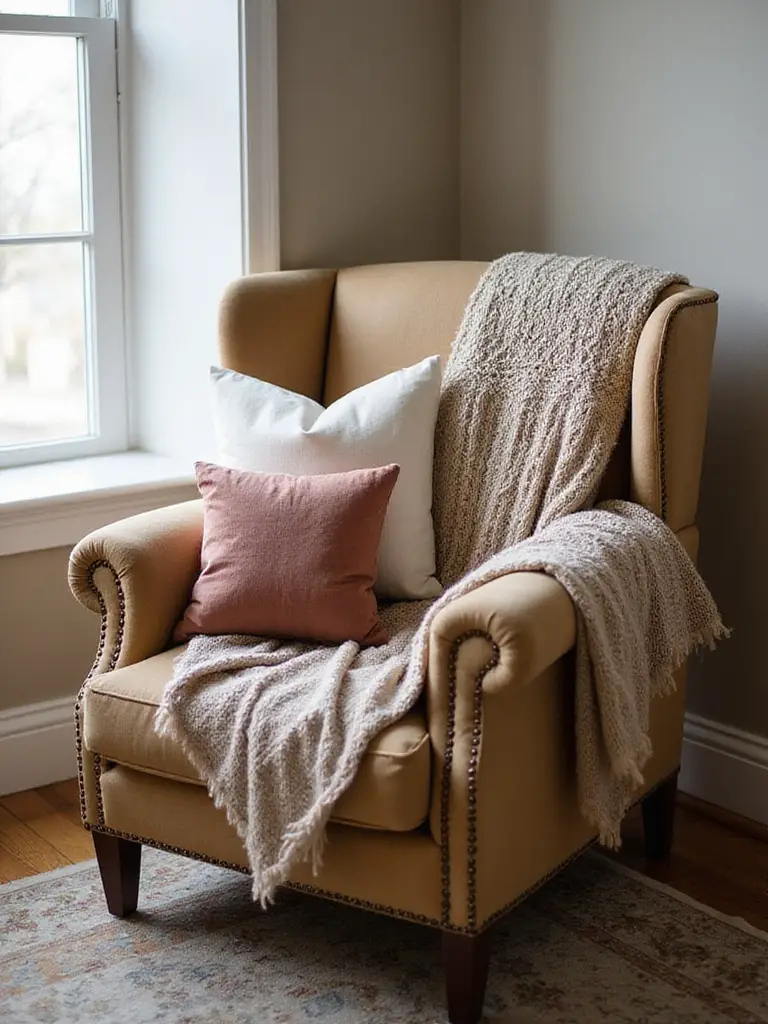
Think in layers. For a standard armchair, start with a solid, larger pillow at the back, maybe in a rich velvet or a raw linen. Then, add a smaller, more decorative pillow in front with a subtle pattern or a contrasting texture. My secret weapon is the lumbar pillow—it’s not only incredibly chic, but it’s also fantastic for back support. And please, use a quality insert. A floppy, lifeless pillow looks sad. The little “designer chop” in the top? It’s not just for show; it’s a sign of a quality down-or-down-alternative fill that says, “this is a place of comfort.”
A pillow is an invitation, but a throw is a full-on embrace.
7. Add Cohesive Throws for Instant Warmth and Style
A throw blanket is the easiest, fastest way to inject a dose of cozy, effortless style onto a chair. It’s like throwing a beautiful cashmere scarf over your shoulders—instant chic. The key is in the drape. Don’t fold it into a perfect, sterile rectangle. That looks like a hotel that’s trying too hard. It needs to look like you just tossed it there, artfully, of course.
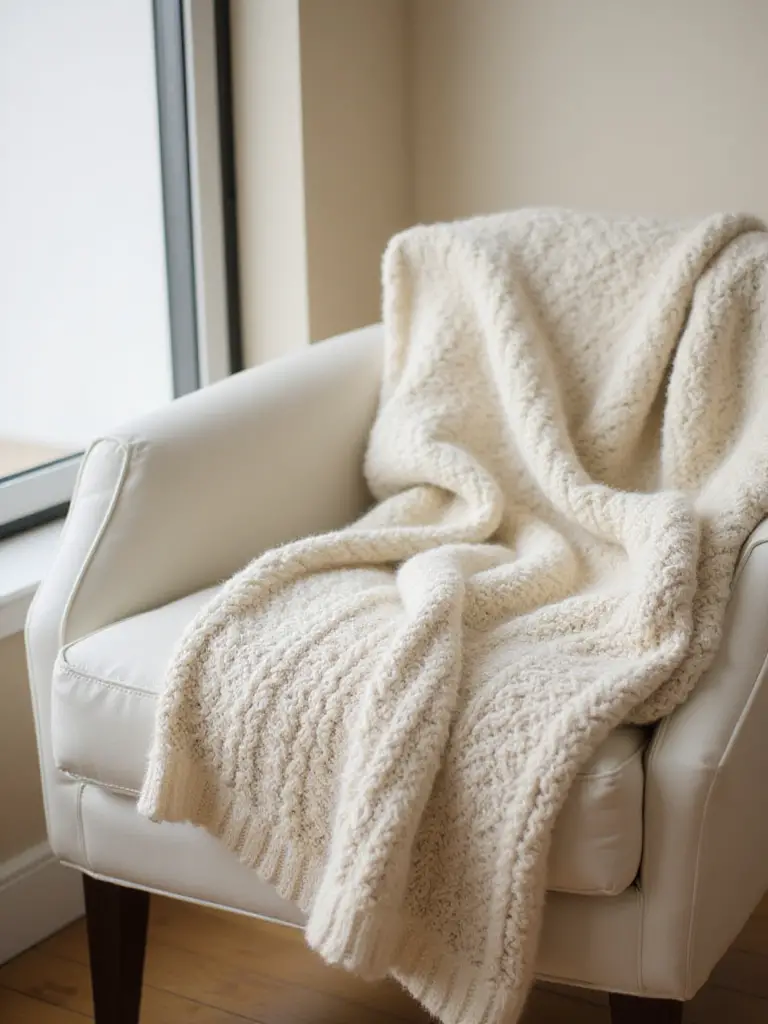
I love to let a beautiful throw cascade over one arm of a chair and onto the seat, creating an inviting, diagonal line. The material is everything here. Forget cheap, staticky fleece. Think of the incredible textures of nature: a chunky, hand-knitted wool, a lightweight Peruvian alpaca, or a soft, sustainable linen for warmer climates. On a project in a contemporary London home, we softened a very architectural armchair by draping a deep emerald green, ridiculously soft alpaca throw over the back. It completely changed the chair’s personality, making it the most coveted spot in the room.
If a throw isn’t enough of a transformation, a slipcover can offer a total reinvention.
8. Update Chair Look Instantly with Designer Slipcovers
Let’s dispel a myth: slipcovers are not the cheap, baggy, floral-chintz horrors of the 1990s. Today’s slipcovers, especially custom or semi-custom ones, are a brilliant design tool. They are the ultimate expression of sustainable, flexible living. Why throw out a perfectly good chair with a solid frame just because the fabric is dated or stained? That’s madness. A well-made slipcover gives it a second, third, or fourth life.
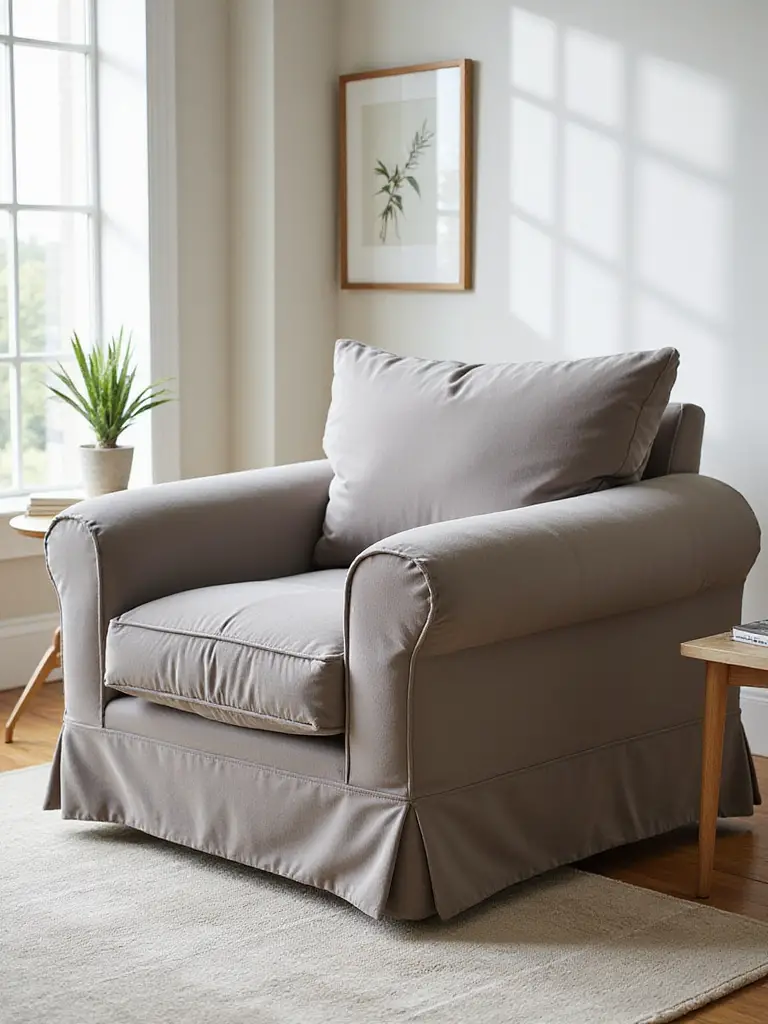
I’m a huge fan of heavy, textural linen slipcovers. They bring a relaxed, coastal, indoor-outdoor feeling to any chair. They’re breathable, beautiful, and get softer with every wash. I had a client with a pair of traditional armchairs she inherited. The shape was classic, but the fabric was tired. Instead of a costly reupholstery job, we had two custom-fit slipcovers made in a gorgeous, weighty, off-white linen. The chairs were instantly transformed—they looked fresh, modern, and perfectly suited to her bright, airy living space. It’s a design trick that is both eco-conscious and incredibly chic.
Beyond the overall look, let’s focus on that irresistible, tactile sensation.
9. Integrate Lux Soft Textiles for Inviting Touch
Our sense of touch is incredibly powerful in making us feel safe and relaxed. A room can be visually stunning, but if it’s all hard edges and cold surfaces, it will never feel like a true home. Integrating luxurious, soft textiles is how you speak to that primal need for comfort. It’s about creating a space that feels as good as it looks.
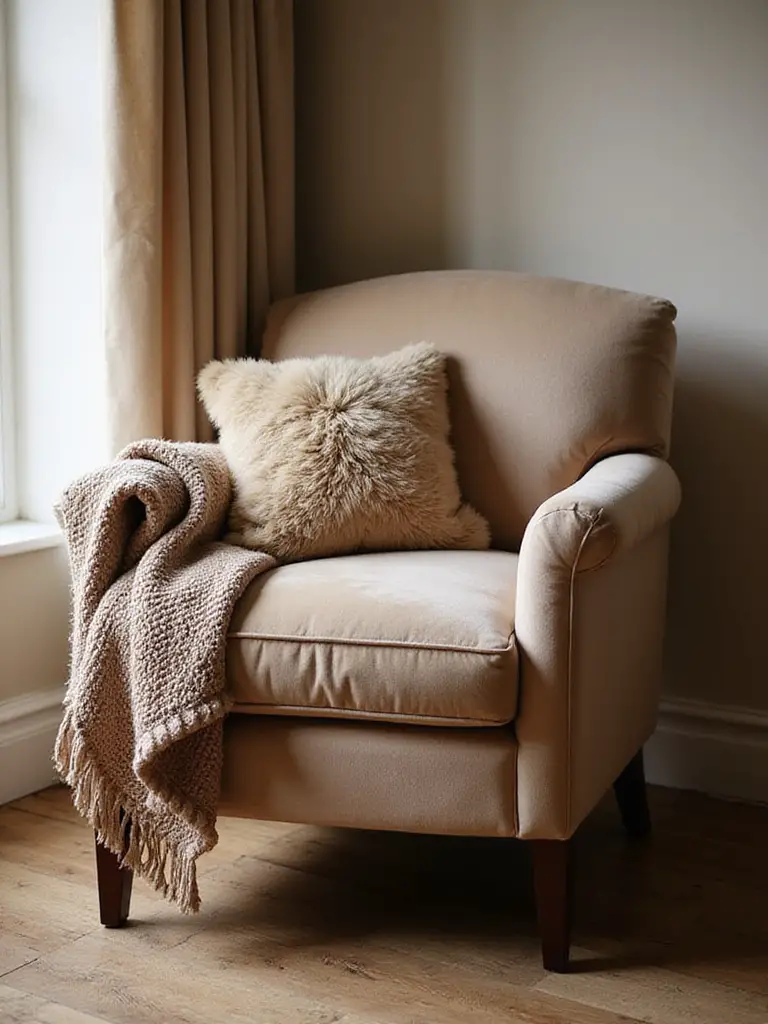
This is where you contrast materials. On a raw, reclaimed wood chair, add a faux sheepskin seat pad. On a smooth leather armchair, pile on velvet pillows. In a room with cool stone floors and big glass windows, a chunky knit throw adds immediate warmth and grounding. These textures create a sensory dialogue. They invite you to run your hand over them, to curl up against them. It’s this deep, tactile comfort that truly defines eco-luxury—materials that feel good against your skin and good for your soul.
Now, let’s arrange all these soft touches into a beautiful composition.
10. Master Pillow Arrangement for Balanced Visual Impact
Okay, a final word on pillows. How you arrange them matters. Piling on a dozen pillows looks messy, and one tiny pillow looks lost. The goal is to create a composition that feels balanced, effortless, and inviting. For most accent chairs, a simple combination of two pillows is perfect and sophisticated.
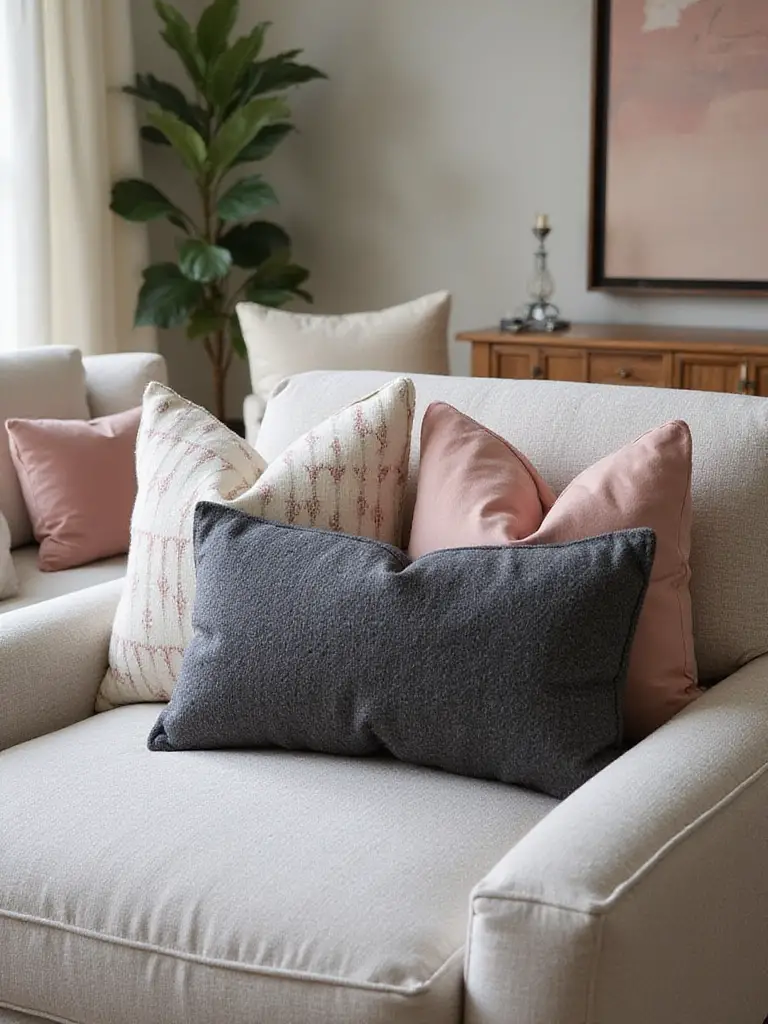
My go-to formula: a 20-inch square pillow placed in the corner of the chair, slightly angled. In front of that, layer a rectangular lumbar pillow. This combination provides both visual interest through contrasting shapes and fantastic ergonomic support. The key is to vary the textures and patterns between the two. Perhaps a solid velvet square with a patterned linen lumbar. It’s a simple, foolproof strategy that makes any chair look instantly, professionally styled.
With the chair itself perfected, we can now place it in the room to create magic.
Strategic Placement & Functional Layouts
A beautiful chair in the wrong place is a wasted opportunity. Placement is the invisible architecture of your room. It dictates flow, conversation, and intimacy. This is where we stop thinking about the chair as an object and start thinking about it as a tool to shape the way you live in your space.
11. Define Conversation Nooks Using Paired Seating
In our modern, open-plan world, creating intimacy can be a challenge. That’s why I love creating small conversation nooks. It’s the simple, timeless art of placing two chairs together to encourage real connection. Forget shouting across a vast living room. A paired-seating nook creates a little world within a world, a place for a quiet morning coffee or a glass of wine with a friend.

Find a natural spot—by a window, near a fireplace, or in a quiet corner. Place two comfortable chairs so they face each other, angled in slightly, with a small table between them. This simple arrangement physically turns people towards one another, making conversation effortless. For a recent project in a large loft, this was a game-changer. We used two low-slung, linen swivel chairs to create a nook. They could face each other for a private chat or turn to join the larger conversation in the main seating area. It gave the clients incredible flexibility and a cherished sense of intimacy.
This idea of angling chairs can be applied throughout the room.
12. Angle Chairs to Optimize Room Flow and Intimacy
Can I tell you a secret? Sticking all your furniture flat against the walls is one of the quickest ways to make a room feel rigid and boring. It’s the interior design equivalent of standing stiffly at attention. Angling your chairs, even slightly, immediately breaks up those static lines and breathes life and movement into the space. It tells the eye that this is a relaxed, dynamic home, not a showroom.
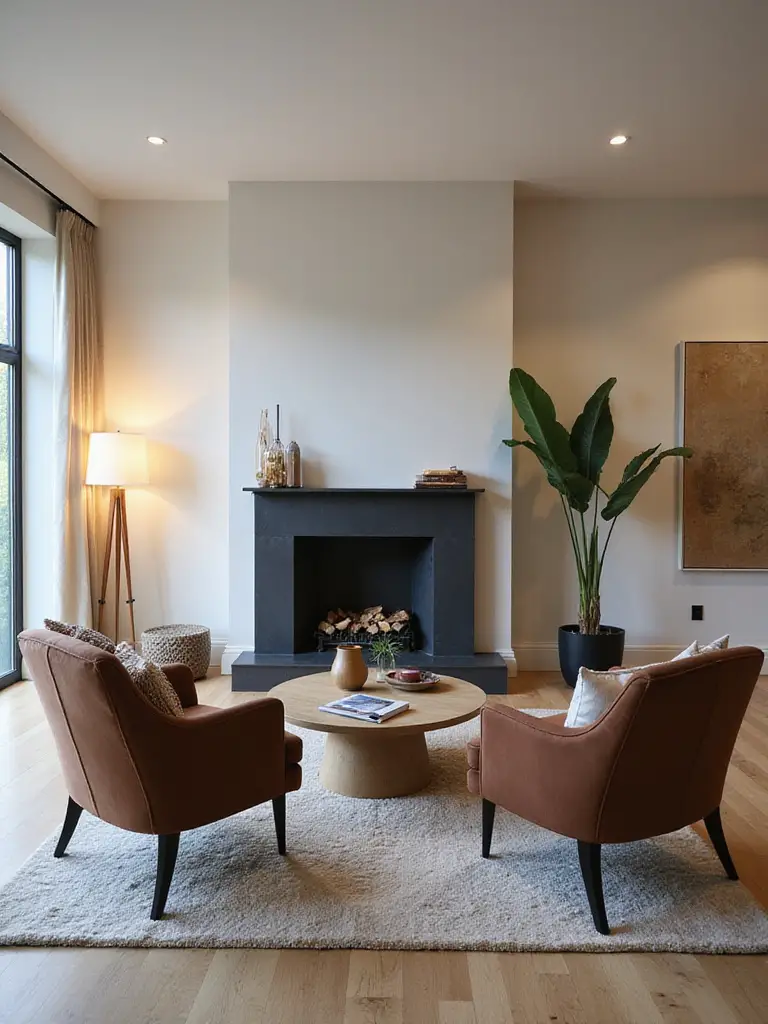
Angling a chair towards another piece of furniture, like the sofa, creates a “conversational triangle” and makes the entire arrangement feel more welcoming and connected. It also helps to guide foot traffic naturally around the seating group instead of through it. Experiment. Pull your chair away from the wall and turn it 30 degrees toward the center of the room. I guarantee the entire space will suddenly feel more sophisticated and inviting. It’s such a simple move with a massive impact.
You can take this a step further by creating a dedicated sanctuary for one.
13. Create Dedicated Reading Zones with Thoughtful Positioning
In our chaotic, always-on world, creating a space for quiet retreat is not a luxury; it’s a necessity. A reading zone is more than a chair and a lamp. It’s a ritual space you carve out for yourself. It’s an act of defiance against distraction. The right positioning is key to making this space feel sacred.
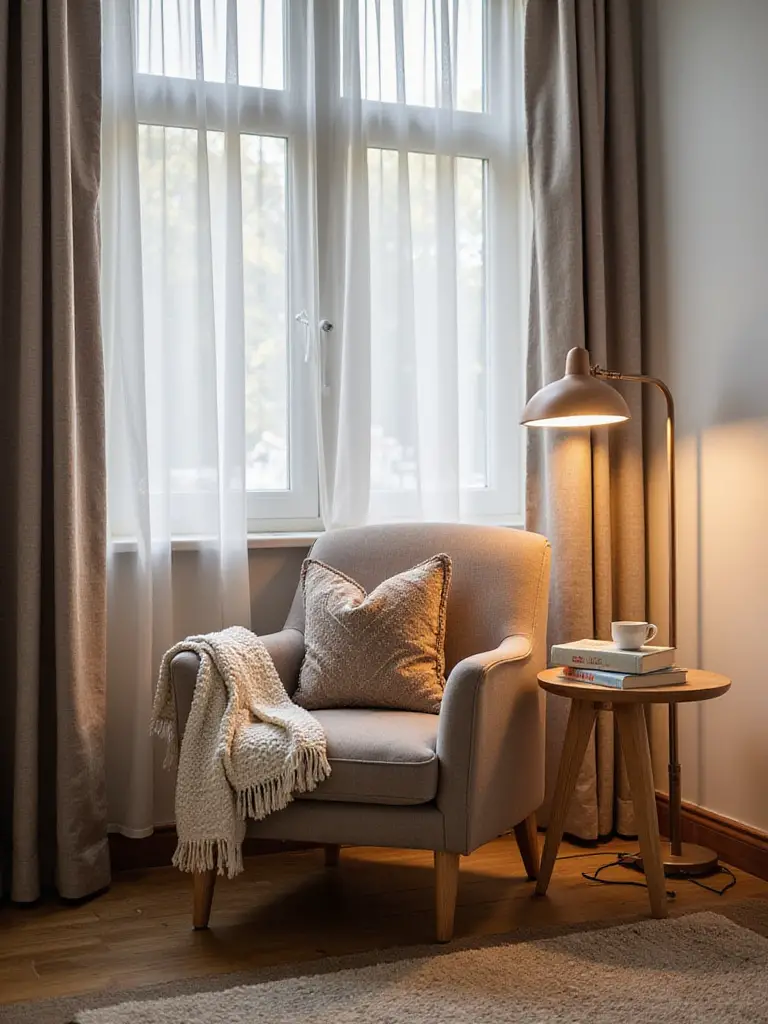
Find a quiet corner, away from the television and high-traffic areas, preferably with a source of natural light. The chair must be deeply comfortable, something you can sink into for hours. The crucial element everyone forgets? Dedicated task lighting. A beautiful, directional floor lamp or a wall-mounted swing-arm lamp is non-negotiable. It prevents eye strain and creates a warm, focused pool of light that shuts out the rest of the world. Add a small table for your tea and your book, and you’ve created a personal sanctuary.
As you get more confident, you can play with more dynamic arrangements.
14. Balance Asymmetrical Layouts for Dynamic Room Appeal
Perfect symmetry is predictable. It can be beautiful, yes, but often it’s a little… dull. Asymmetry, when done correctly, is where the real design magic lies. It creates a dynamic tension and a natural, organic flow that feels far more curated and personal. It’s about balancing visual weight, not mirroring identical objects. An asymmetrical layout invites your eye to dance around the room.
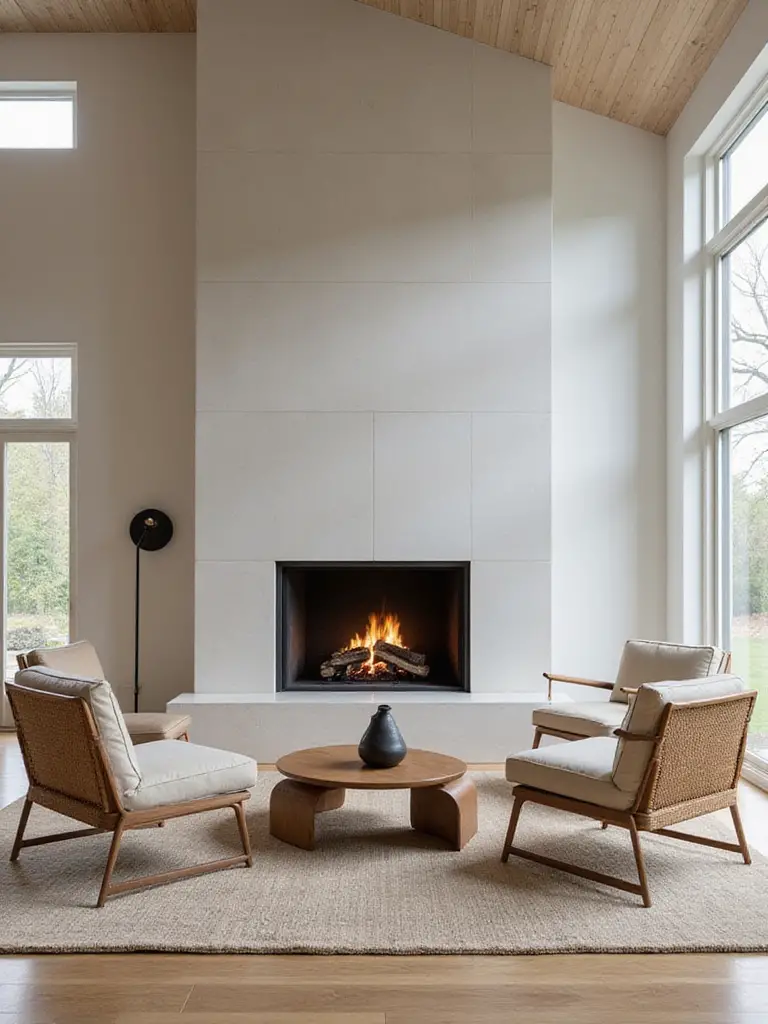
Here’s how you do it with chairs. If you have a large, heavy element on one side of the room, like a big sectional sofa, you don’t need another heavy piece to balance it. Instead, you can use a combination of lighter elements. For instance, balance that heavy sofa with a visually lighter armchair, a tall, sculptural floor lamp, and a cluster of plants on the other side. The combination of these pieces equals the visual weight of the sofa. The best shortcut to check your work? Take a photo of the room on your phone and turn it to grayscale. This removes the distraction of color and instantly reveals where the heavy and light spots are.
Your chair placement is also crucial for how people move through the space.
15. Guide Foot Traffic Flow with Intentional Chair Placement
Great design feels effortless. A well-designed room guides you through it without you ever realizing it. You can use chairs as subtle signals to direct the flow of traffic. Their placement can create clear, intuitive pathways that make a room feel more spacious and orderly. A strategically placed chair can keep people from cutting through the middle of a conversation area, preserving its intimacy.
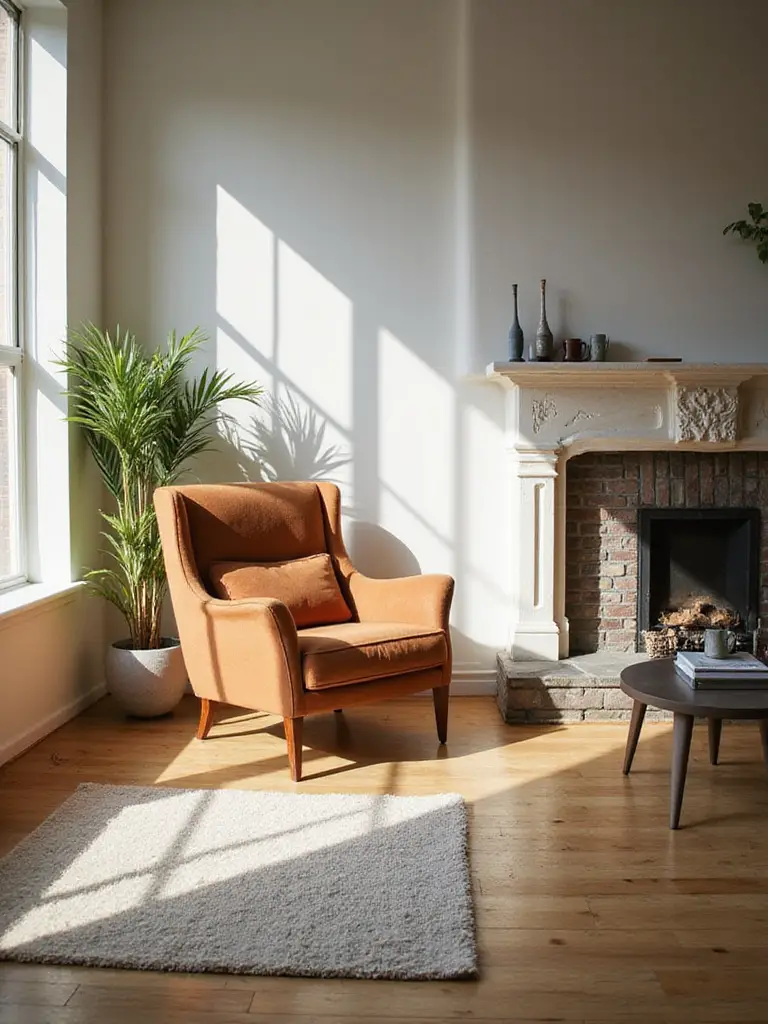
Think about the main traffic routes in your living room—from the doorway to the sofa, or from the kitchen to the patio doors. Make sure these paths are at least 3 feet wide and unobstructed. You can use the back of an armchair to create a soft “wall,” signaling the edge of a seating zone and encouraging people to walk around it. This isn’t about creating an obstacle course; it’s about defining spaces with grace so the room functions as beautifully as it looks.
Completing the Ensemble with Thoughtful Accents
Your chair is now chosen, styled, and perfectly placed. The final layer is the supporting cast—the accents that complete the scene and make the vignette truly functional and beautiful.
16. Select Complementary Side Tables for Added Functionality
A chair without a side table is like a bed without a nightstand—it’s fundamentally incomplete. Where do you put your cup of coffee? Your book? Your glass of wine? A side table isn’t just an accessory; it’s an essential piece of functional decor. It transforms your beautiful chair into a usable, livable space.
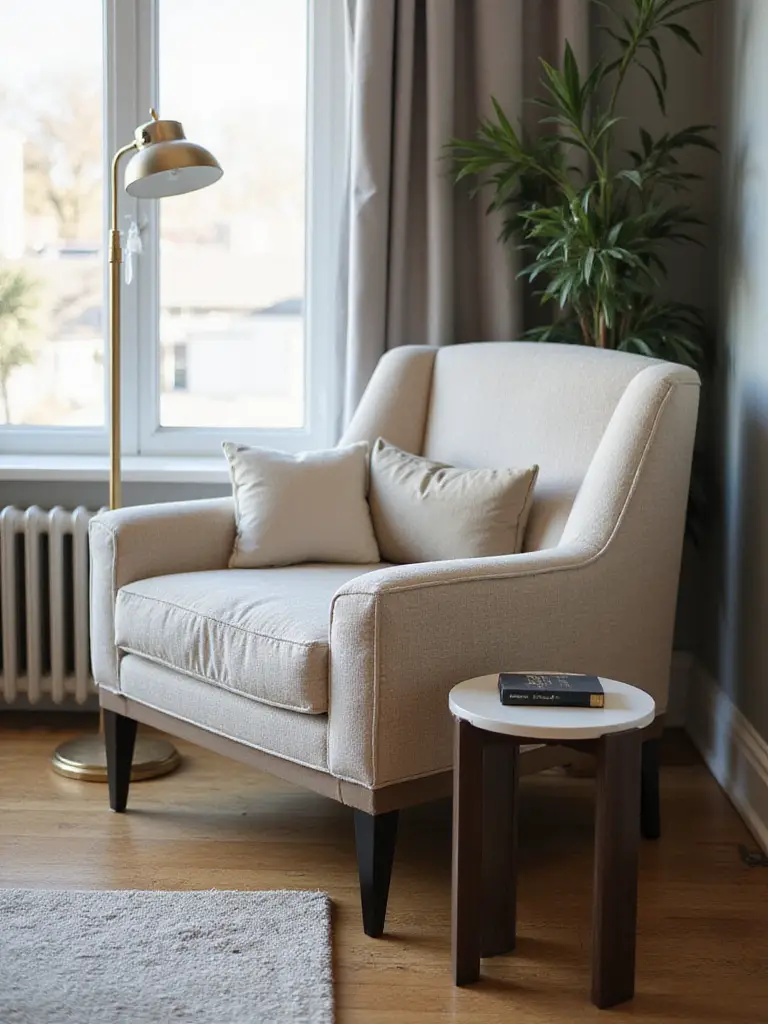
The golden rule for height is that the table should be at, or just below, the height of the chair’s arm. This makes it comfortable to reach. But don’t feel you need to buy a matching set! This is another chance to add personality. Contrast a soft, upholstered chair with a rustic, reclaimed wood table. Or pair a sleek, modern chair with an organic, sculptural stone pedestal. One of my favorite solutions for small spaces is the C-table, whose base slides right under the chair, saving floor space while providing a perfect, handy surface.
Once you have a surface, you need the right light to illuminate it.
17. Illuminate Chair Areas with Stylish Task Lighting
We talked about task lighting for reading nooks, but it’s crucial for any chair you want people to actually use. General overhead lighting is fine for navigating a room, but it creates a flat, sterile environment. Task lighting creates mood, depth, and focus. It carves out a warm, inviting pool of light that makes a space feel infinitely more intimate and cozy.
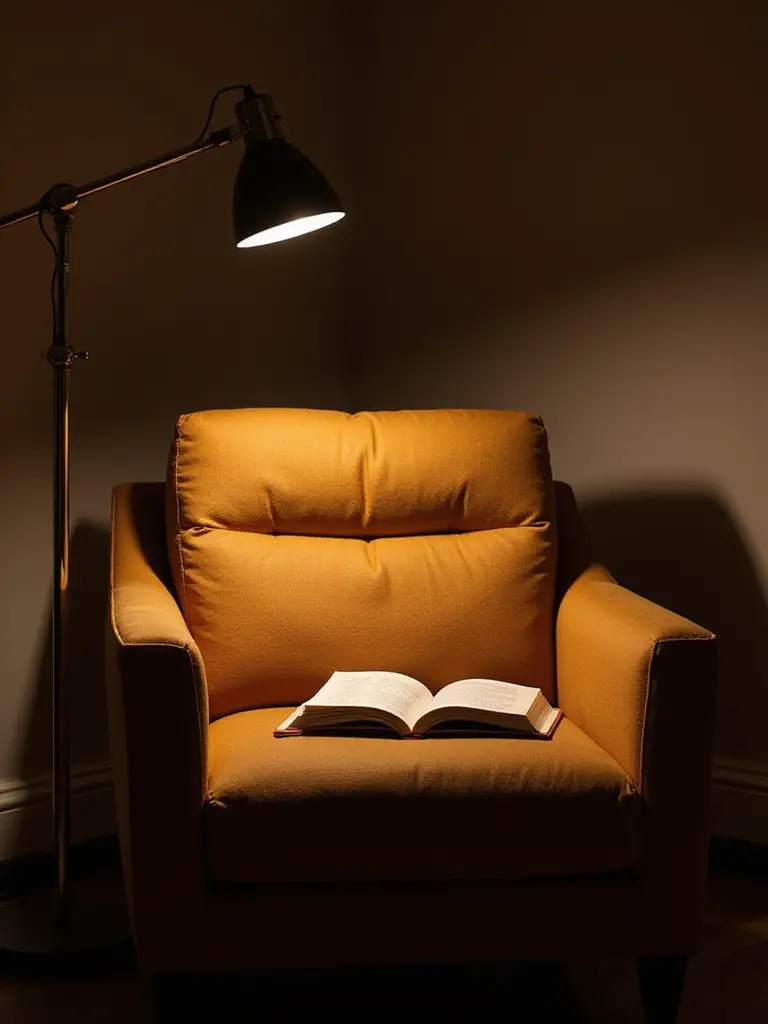
Choose a light source that is as beautiful as it is functional. A sculptural arc lamp that sweeps over your chair can be a stunning focal point. A pharmacy-style floor lamp is classic, adjustable, and perfect for reading. Make sure you use a warm-temperature bulb (look for 2700K on the box) and, if possible, put it on a dimmer. Being able to control the intensity of the light allows you to shift the mood from bright and functional to soft and relaxing at a moment’s notice.
To ground this entire vignette, we need to look down.
18. Anchor Your Chair with the Right-Sized Area Rug
Here it is, the cardinal sin of interior design: the tiny, floating postage-stamp rug. An undersized rug makes everything in the room look cheap and disconnected. A properly scaled area rug is the foundation that pulls the entire chair vignette together, visually anchoring it to the floor and defining its space.
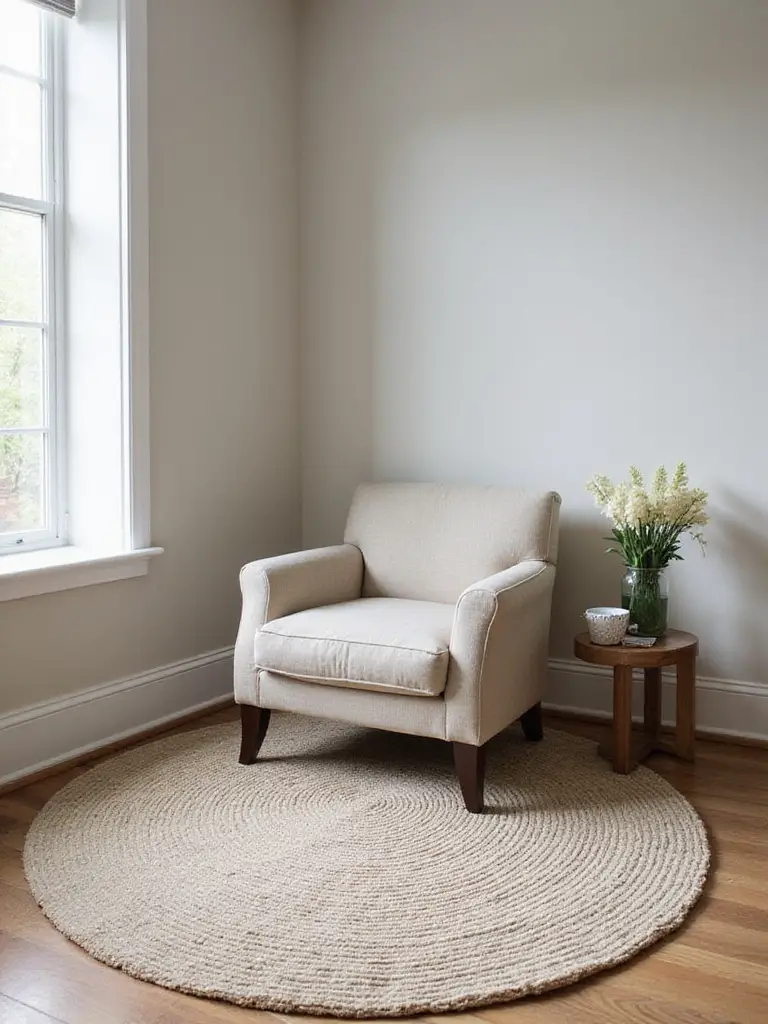
If you have a single accent chair, you need a rug that is large enough for at least the front two legs of the chair to rest comfortably on it. Even better, use a rug that the entire chair and its side table can sit on completely. This creates a clear, intentional zone. When in doubt, always go bigger. A generously sized rug, made from natural fibers like wool, jute, or sisal, will always look more luxurious and thoughtful. It’s the difference between a chair floating in space and a chair that has a true home.
Finally, we look up to the wall to complete the story.
19. Enhance Chair’s Aura with Nearby Wall Art Selection
The wall behind or beside your chair is not just dead space; it’s a canvas. The art you choose completes the visual story of your seating area. It gives the chair context, personality, and a sense of place. A beautiful chair paired with the right artwork becomes more than the sum of its parts; it becomes a curated, emotional moment.
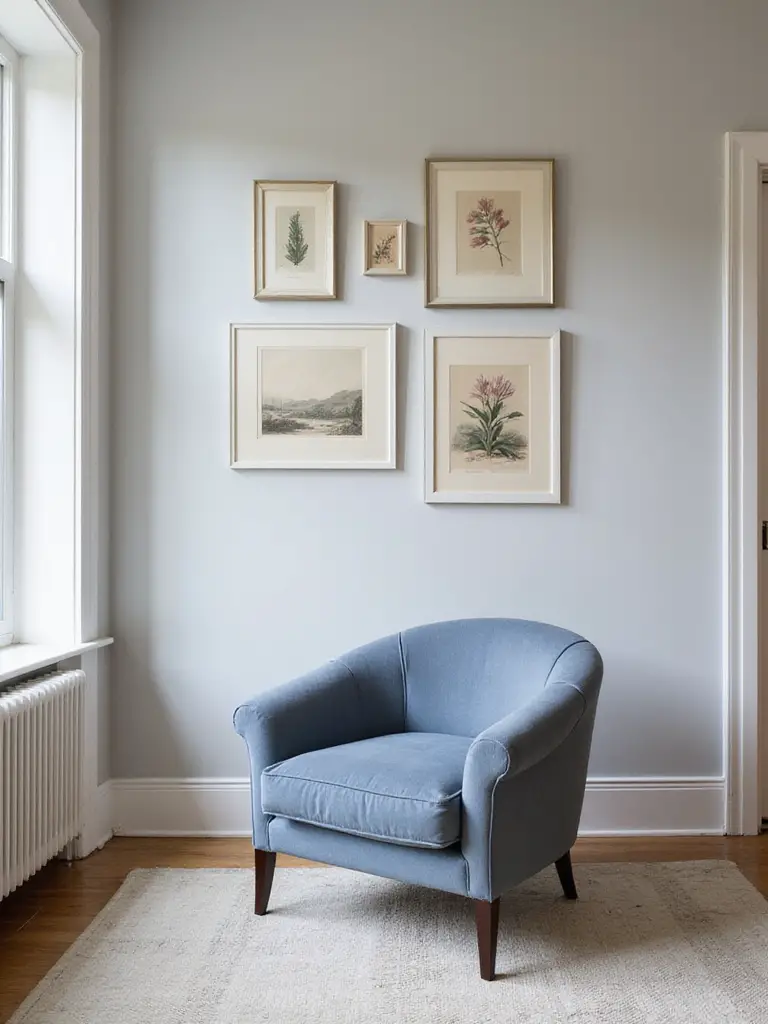
The scale is crucial. The artwork should be proportional to the chair—typically about two-thirds the width of the chair if you hang it above. The bottom of the frame should be about 6-10 inches above the top of the chair to create a cohesive visual unit. But don’t just hang one picture. A more modern approach I love is to lean a large, unframed canvas against the wall behind the chair for a relaxed, studio feel. Or create a small, personal gallery wall next to it. The art doesn’t have to “match,” but it should share a mood or a color from the chair or pillows to feel connected.
The Takeaway
See? It’s not about following rigid rules. It’s about thinking holistically. It’s about understanding that a single chair is a microcosm of your entire home’s design philosophy. By focusing on quality, texture, placement, and personal touches, you’re doing more than just decorating. You’re creating spaces that have soul. You’re building a home that not only looks beautiful but feels beautiful—a sanctuary that is both luxurious and deeply, authentically yours.
So, go look at your chair. Don’t see it as a problem to be solved. See it as a story waiting to be told. Start with one thing. A new pillow. A beautiful wool throw. A small side table. You’ll be amazed at how one small, thoughtful change can radiate outwards, bringing life to the entire room.
